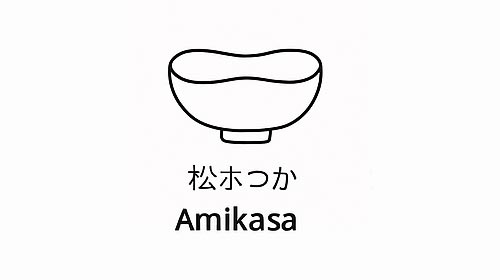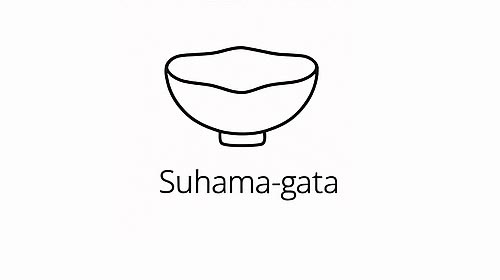The Amikasa chawan is a modern poetic statement within the traditional world of chawan. Its name "Amikasa" (編笠) literally means "woven hat," referring to the shape of traditional Japanese sun hats made of bamboo or rice straw. This form is unusual, almost experimental—and at the same time profoundly Japanese: It is an expression of permeability, light, and air.
Form & Character
The Amikasa chawan is flat, slightly conical, and very open , usually with a wide, flared rim. Its silhouette is reminiscent of a shade-providing hat that allows air to circulate. It appears light, almost floating—a bowl that breathes.
The shape is not strictly cylindrical, but dynamic: the rim can be slightly wavy, the walls often thin, sometimes with a slight outward slope. Many Amikasa bowls deliberately play with irregularity – in the spirit of wabi-sabi .
Modern origins & creative development
The Amikasa-gata is not a historical form in the strict sense. It originated in the 20th century , initially by experimental ceramists in Kyoto, Mashiko, and Bizen who were searching for new, symbolic forms to capture the seasonal mood in the bowl itself.
The association with straw hats, light, and openness makes the amikasa chawan a popular form for summer ceremonies or for freer, artistic interpretations of chanoyu . It is particularly popular in modern tea practices, where design and atmosphere are more closely integrated.
Materials & Glazes
This bowl is crafted in a variety of clays, often in small studios or by individual artists. Typical examples include:
-
light, light-fired clays , sometimes with translucent glaze
-
Craquelure or salt glazes that reflect the light
-
unglazed at the foot ring to visually “lift” the bowl
Glazes can be light blue, sand-colored, pale green or pink – colors of the sky, of the light, of the morning.
Function & Context
Amikasa bowls are primarily used for usucha . Their open shape allows for quick foaming, the foam is beautifully visible, and the matcha cools more quickly. This makes them ideal for warm days or informal gatherings in the garden.
They are ideal:
-
for summer or morning ceremonies
-
in creative ceremonies or in tea education
-
for modern settings in which design and poetry can merge
Aesthetics & Symbolism
The Amikasa represents light, openness, and breath . It points to the in-between—not fixed, not fleeting. Its form invites meditation on shadows, transience, and connection with the outside world.
It embodies the beauty of the in-between space —the "Ma," as it is called in Japanese aesthetics. It embodies not dogma, but changeability.




Leave a comment
This site is protected by hCaptcha and the hCaptcha Privacy Policy and Terms of Service apply.